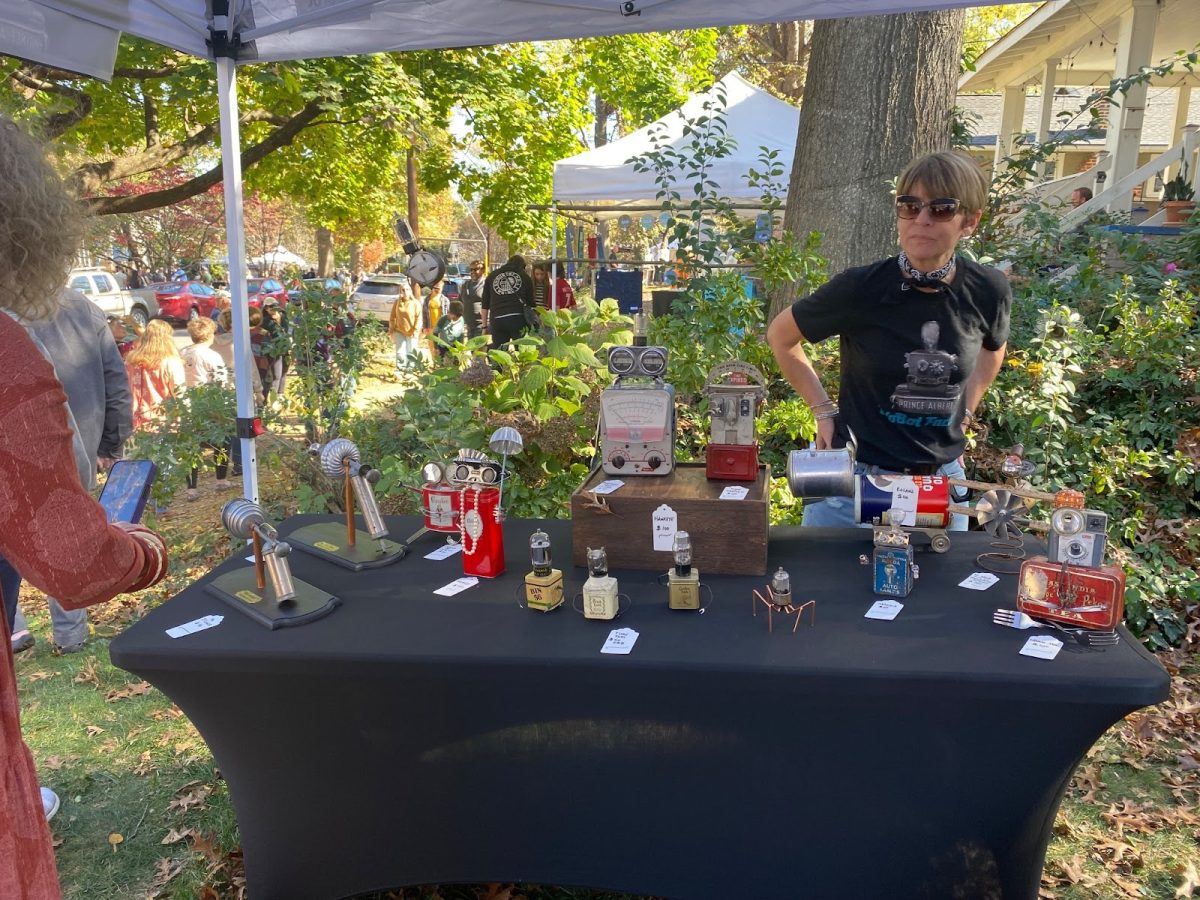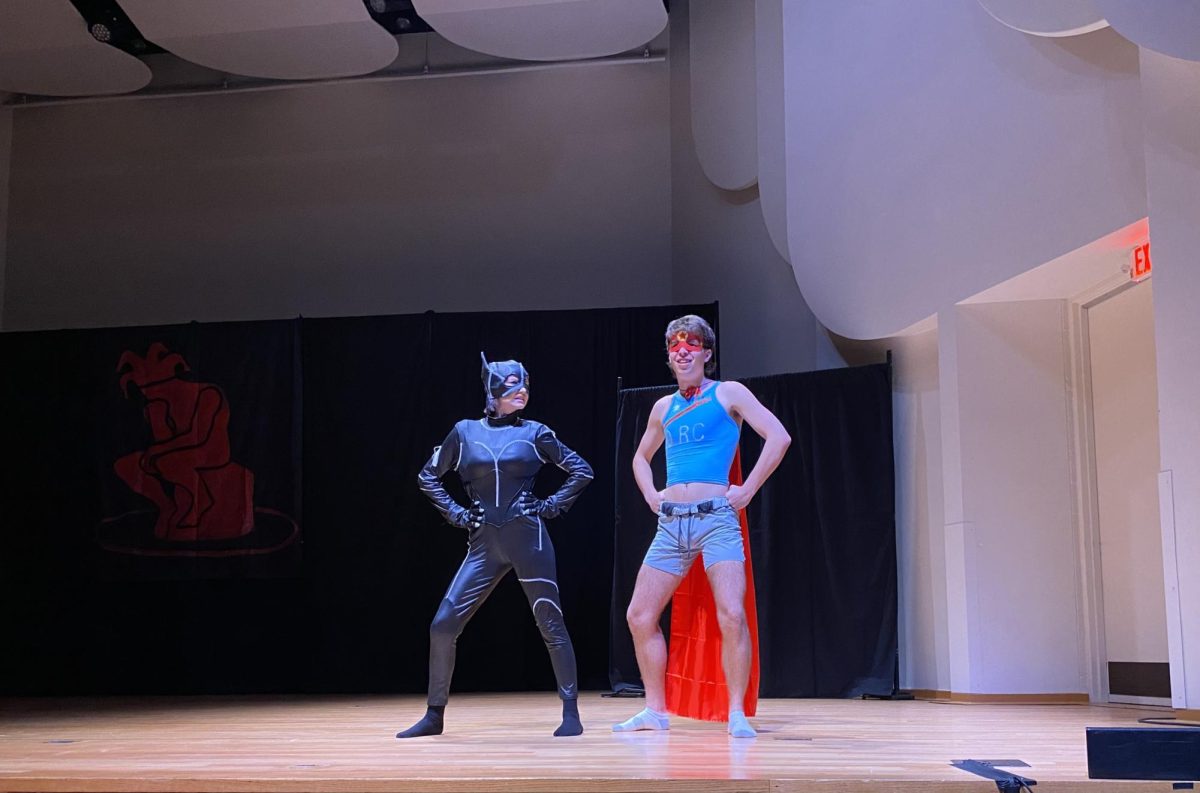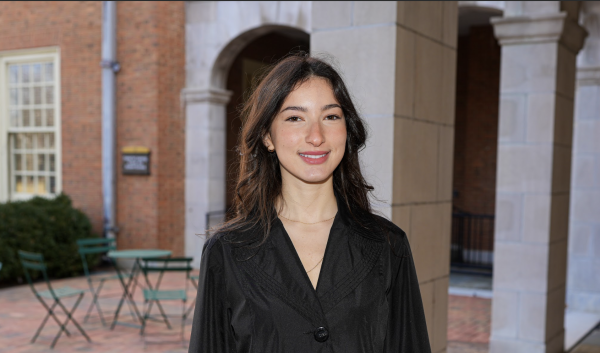Perfect fall weather invited crowds to the historic streets of Ardmore, a neighborhood in Winston-Salem known for its artists, for the fourth annual Art Walk on Nov. 9. Artists were spread out on Elizabeth and Rosewood Avenues, Irving Street and Academy Street up to Hawthorne Road, making the circuit highly walkable and centralized.
Artists Emily Clare and Annie Grimes Williams created the Ardmore Art Walk during the pandemic as a way to showcase their art and fellow artists.
“We got to talking, and from there, we decided we could do something in our yards,” Clare said in an interview with the Winston-Salem Journal.
What began as a modest neighborhood effort has blossomed into a beloved local tradition.
“When it started, the walk featured around 20 artists and has now grown to over 95 artists,” said Janet Brown, a sculptor and ceramics maker, whose setup was nestled in her luscious, whimsical garden, adorned with many of her works.
The rapid growth of the Art Walk indicates the neighborhood’s deep artistic roots and the community’s enthusiasm for celebrating creativity in an accessible way.
Many attendees were decked out in patchwork jeans, afghan coats and colorful asymmetrical jewelry, often self-made, which indicated that we were indeed at the heart of Winston-Salem’s arts scene — a bastion of outrage, sensitivity and creativity.
Winston-Salem natives and visitors — who frequently stopped my sister and me to ask for good places to eat — were urged to try the food trucks parked in Ardmore Baptist Church as they milled about the neighborhood.
My sister was on a mission to find a nice ceramic or piece of stained glass to take home. We approached a table that was filled with ceramic mugs molded with interesting little faces full of mischief. She opted for a small steampunk-esque piece of glass with crystalline blues and opalescent micro-rainbows.
Artists spent the early morning to late afternoon peddling their vibrant creations and experimentations. Metalsmiths like Mark Wojchick showcased handmade robots put together from random objects to create his “WoBot Factory full of charismatic little friends.” Wojchick, a first-time vendor at the Art Walk, said he was “thrilled with the turnout and excited [how he] might grow [his] table for the next Art Walk.”
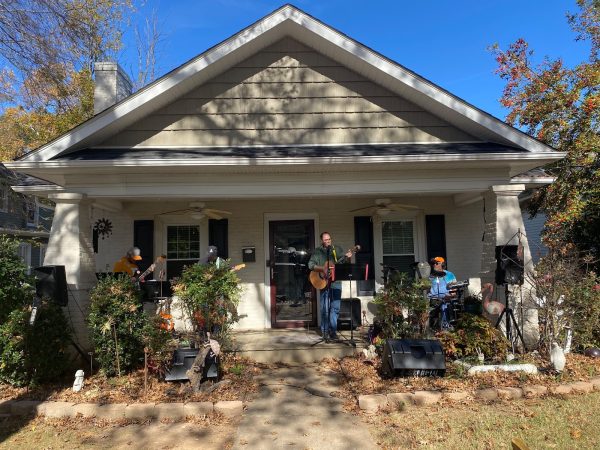
My personal favorite table was “Hand Knits” by Jeanne Bell, a charming, longtime Ardmore resident who shared that her daughter, now in her thirties, asked her to knit them “during a moment of nostalgia as she had her own children.”
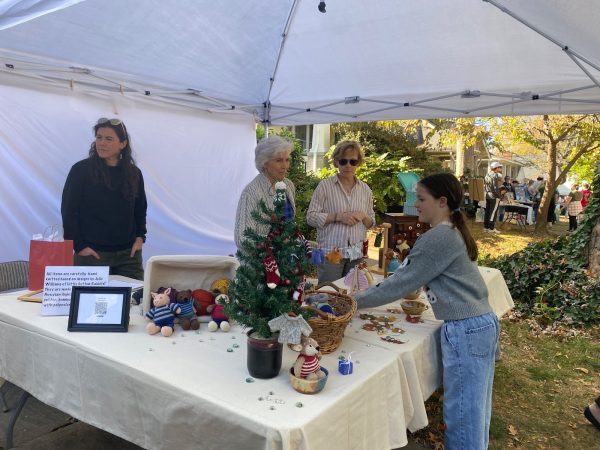
Something new I noticed this year was an emphasis on tables and activities for kids. John Cahoon, an illustrator and artist from Winston-Salem, had a table that felt like stepping into a kind of wonderland full of magic and brilliance, evoking the lost sheens I once knew as a child, digging up worms and biking around my neighborhood — my own personal performance art.
Cahoon approached me as I admired his original creation of “Fairy Chess,” whose rooks and bishops were replaced by toadstools and Penny Buns, and asked me if I wanted to find out what kind of fairy I was. He referenced his “Fairy Field Guide,” which was “created for [his] daughter when she was six to fulfill her wish to speak to fairies.” (He determined that I was a water fairy, in case you were wondering). His other whimsy trinkets and tchotchkes included magical greeting cards, wood cookie fairy spirit animals, eclectic sculptures and jewelry for the young at heart.
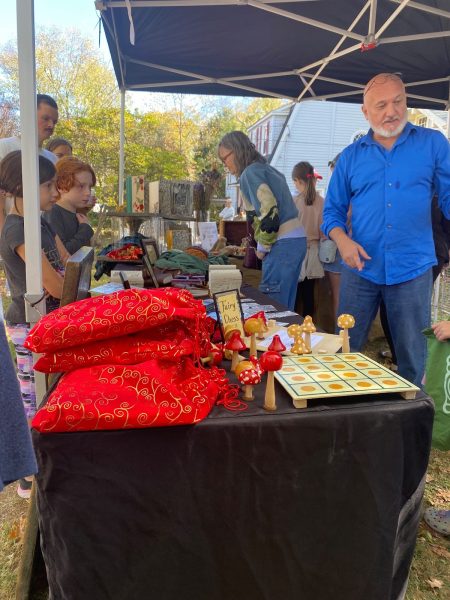
On our way out, my sister and I stopped at a table for cider at an idyllic wooden stand run by two little girls. 100% of the proceeds were donated to the Forsyth Humane Society. Parallel to their stand was a kid jumping into a pile of yellow leaves as tall as he was. It struck me that this was the essence of the walk, what it was really about: people of all ages experiencing art in an open space, freely and viscerally, in any way they desired.
The next Ardmore Art Walk will take place again this April, the exact date is currently unspecified.



